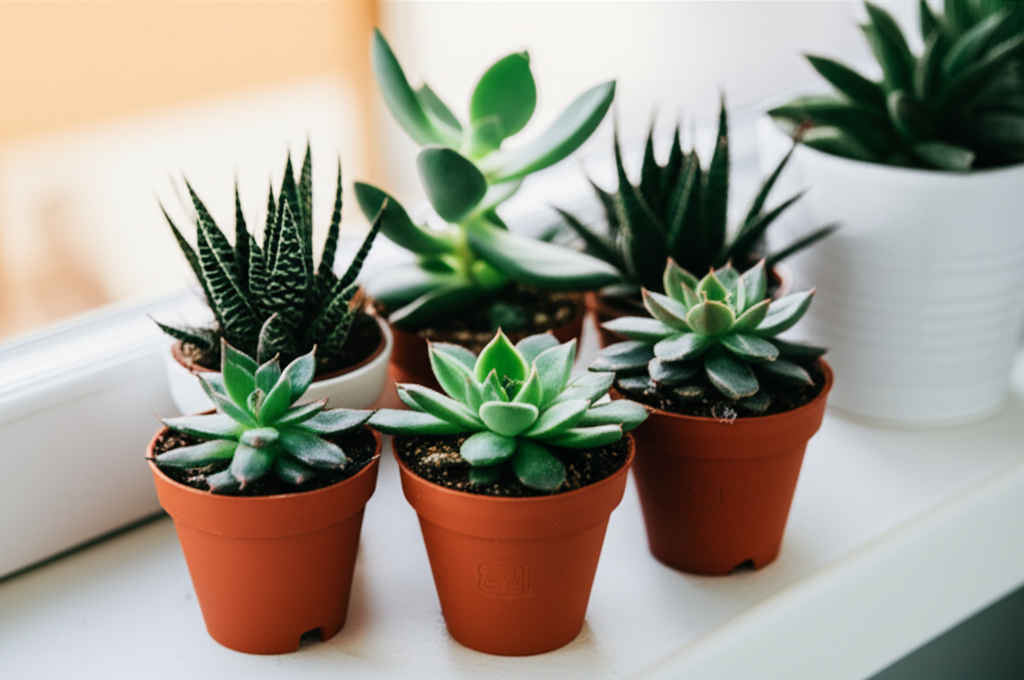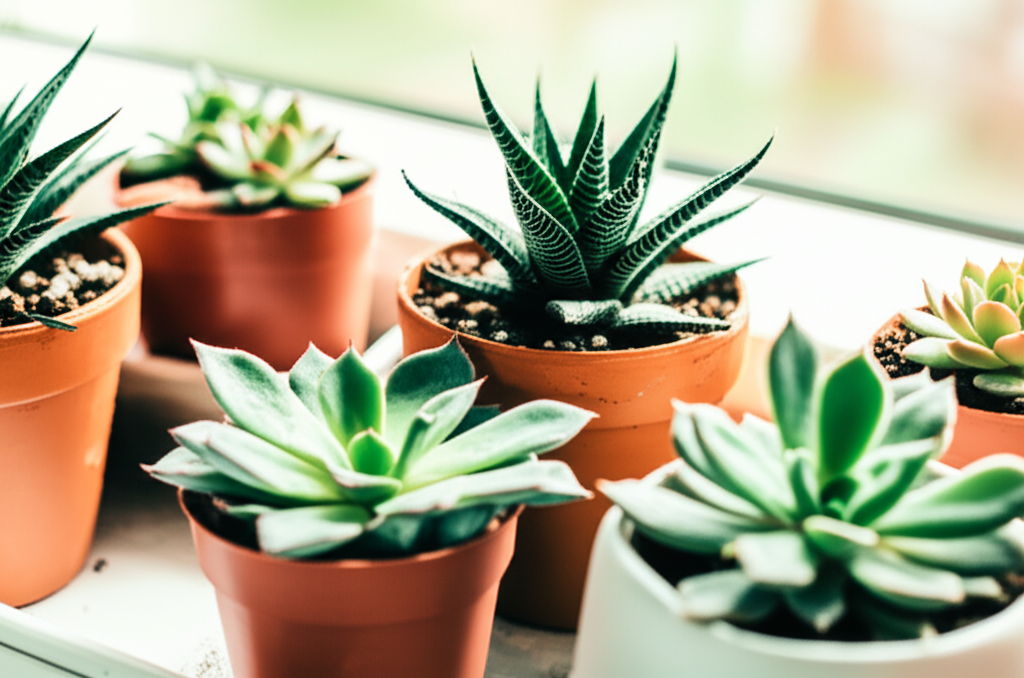Introduction: The Allure of the Ice Plant Succulent for Your Balcony Oasis
Transforming a balcony into a vibrant, low-maintenance sanctuary is a dream for many urban dwellers. Among the myriad of options, the ice plant succulent stands out as a particularly captivating choice. Known for its glistening, crystalline structures that resemble dew or ice crystals, these succulents offer a unique visual appeal and surprising resilience. This article delves into creative indoor balcony setups featuring ice plant succulents, exploring their care, aesthetic potential, and how to craft a miniature succulent paradise. Whether you’re a seasoned plant enthusiast or a budding horticulturist, discover how to elevate your balcony with the dazzling charm of ice plants.
Understanding Ice Plant Succulents (Mesembryanthemum crystallinum)

Before diving into creative setups, it’s crucial to understand the basics of ice plant succulents. Native to coastal regions, they are well-adapted to sunny, dry conditions. Their most striking feature is the presence of papillae, small bladder-like cells on their leaves and stems that store water and give them their characteristic icy appearance. This adaptation not only helps them survive in arid environments but also creates a visually stunning effect.
Key Characteristics
- Appearance: Covered in glistening papillae that refract light, creating a sparkling, icy look.
- Growth Habit: Typically a low-growing, creeping or trailing succulent.
- Flowering: Produces delicate, star-shaped flowers, often in shades of pink, white, or yellow, which add another layer of beauty.
- Water Storage: The papillae store water, contributing to their drought tolerance.
- Light Requirements: Thrives in full sun.
Why Choose Ice Plants for Balcony Setups?
Ice plants are an excellent choice for balcony gardening due to their compact size, drought tolerance, and striking visual appeal. They can withstand a good amount of direct sunlight, which many balconies receive, and their water-storing capabilities mean they are forgiving if you occasionally forget to water them. Their unique texture and potential for vibrant blooms make them a standout feature in any mini succulent arrangement.
Creative Indoor Balcony Setup Ideas
The “indoor balcony” concept refers to creating a sheltered, often enclosed or semi-enclosed, balcony space that can be enjoyed year-round, mimicking an indoor plant environment with controlled conditions. This is ideal for succulents that might be sensitive to extreme weather.
1. The “Zen Garden” Mini Setup
Embrace tranquility with a minimalist Zen-inspired arrangement.
- Container: A shallow, wide ceramic or stone planter, reminiscent of a traditional Zen garden tray.
- Base Layer: Coarse sand or fine gravel as a decorative and well-draining base.
- Succulent Placement: Arrange several ice plant succulents of varying sizes and growth habits. Include trailing varieties to spill over the edges.
- Accents: Smooth river stones, a small decorative rake (for aesthetics, not actual raking), and perhaps a single, well-placed piece of driftwood.
- Color Palette: Focus on earthy tones, muted greens, and the natural sparkle of the ice plants.
2. The “Hanging Jewels” Vertical Garden
Maximize vertical space and create a cascading effect.
- Containers: Small terracotta pots, repurposed tins, or macrame plant hangers.
- Succulent Choice: Trailing ice plant varieties are perfect for this setup.
- Arrangement: Hang multiple pots at different heights. Allow the succulent stems to trail downwards, creating a living curtain of sparkling foliage.
- Location: Ideal for the railing of a balcony or a wall on an enclosed balcony.
- Lighting: Ensure these hanging plants receive ample sunlight.
3. The “Miniature Desert Landscape” Diorama
Recreate a small-scale desert scene.
- Container: A clear glass terrarium or a deep, wide planter with a clear front.
- Layers: Start with a drainage layer (gravel), followed by a layer of activated charcoal, and then a cactus/succulent potting mix.
- Hardscape: Incorporate small, interesting rocks, pebbles, and sand to mimic desert terrain.
- Succulent Selection: Mix ice plants with other drought-tolerant succulents like Echeverias, Sedums, or Haworthias for varied textures and forms.
- Details: Small figurines like miniature animals or tiny cacti can add a whimsical touch.
4. The “Coastal Breeze” Theme
Evoke the feeling of a seaside escape.
- Containers: Whitewashed terracotta pots, weathered wood planters, or even repurposed shells.
- Accents: Seashells, small pieces of driftwood, and coarse, light-colored sand.
- Planting Medium: Use a sandy, well-draining soil mix.
- Succulent Choice: Ice plants naturally fit this theme with their coastal origins. Consider combining them with succulents that have blue-green or silvery foliage.
Key Facts and Comparison: Ice Plants vs. Other Popular Balcony Succulents
To better understand the niche of ice plants, let’s compare them with a few other popular succulents often used in balcony setups.
| Feature | Ice Plant (Mesembryanthemum crystallinum) | Echeveria | Sedum (Stonecrop) | Sempervivum (Hens and Chicks) |
|---|---|---|---|---|
| Drought Tolerance | High | High | Very High | Very High |
| Sunlight Needs | Full Sun | Full Sun to Partial Shade | Full Sun | Full Sun to Partial Shade |
| Unique Visual Appeal | Glistening papillae | Rosette shape, varied colors | Fleshy leaves, trailing or upright forms | Rosette shape, prolific offsets |
| Watering Frequency | Infrequent | Infrequent | Very Infrequent | Very Infrequent |
| Flowering | Delicate, star-shaped | Spike, often bell-shaped | Star-shaped clusters | Star-shaped |
| Ideal for Trailing | Yes, many varieties | Some varieties | Many varieties | No, typically clumping |
Essential Care for Your Balcony Ice Plant Succulents
Successful ice plant succulent setups depend on proper care, tailored to their specific needs.
1. Light: The Sun-Kissed Imperative
Ice plants crave sunlight. For your balcony setup, aim for a location that receives at least 6-8 hours of direct sunlight per day. If your balcony has less intense light, consider rotating your plants or placing them in the brightest spot available. Insufficient light will lead to leggy growth and a loss of their characteristic sparkle.
2. Soil: Drainage is Paramount
Like all succulents, ice plants absolutely require well-draining soil. A commercial cactus and succulent mix is a good starting point. You can improve drainage further by adding perlite, pumice, or coarse sand to the mix. Avoid heavy, moisture-retentive soils.
3. Watering: Less is More
The most common mistake with succulents is overwatering. Ice plants are remarkably drought-tolerant. Water thoroughly only when the soil has completely dried out. In cooler months or periods of low light, reduce watering frequency even further. It’s better to underwater than overwater.
4. Temperature and Ventilation
Ice plants generally prefer warmer temperatures and do well in the conditions typically found on sheltered balconies. They can tolerate some heat, but extreme, prolonged temperatures might require providing some afternoon shade. Good air circulation is also important to prevent fungal issues. Enclosed balconies can sometimes trap humidity, so ensure there’s adequate ventilation.
5. Fertilizing: A Light Touch
Ice plants are not heavy feeders. Fertilize sparingly during the growing season (spring and summer) with a diluted, balanced liquid fertilizer. Avoid fertilizing in winter.
6. Potting and Repotting
Choose pots with drainage holes. Repot your ice plants when they outgrow their current container or when the soil has become compacted. This is usually every 2-3 years. Spring is the best time to repot.
Troubleshooting Common Ice Plant Issues
Even with careful planning, you might encounter a few challenges.
- Mushy Leaves/Stems: This is a clear sign of overwatering and potential root rot.
Solution: Immediately stop watering and allow the soil to dry out completely. If rot is severe, you may need to repot with fresh, dry soil after trimming away any affected parts.
- Leggy Growth (Stretching): Indicates insufficient light.
Solution: Move the plant to a brighter location. You can prune leggy stems back to encourage bushier growth.
- No Sparkle: Papillae may be covered in dust or the plant isn’t receiving enough light.
* Solution: Gently mist the plant with water and allow it to dry in bright light, or wipe the leaves with a soft, dry cloth. Ensure adequate sunlight.
Pros and Cons of Ice Plant Succulent Balcony Setups
As with any gardening endeavor, there are advantages and disadvantages to consider.
| Pros | Cons |
|---|---|
| Unique Aesthetics: The glistening papillae offer a distinctive visual appeal. | Light Dependency: Requires significant direct sunlight to thrive and maintain its sparkle. |
| Drought Tolerance: Low watering needs, making them ideal for busy individuals or those prone to forgetting. | Overwatering Risk: Susceptible to root rot if soil remains consistently moist. |
| Low Maintenance: Generally hardy and require minimal intervention once established. | Cold Sensitivity: May not tolerate freezing temperatures, necessitating a sheltered or indoor balcony. |
| Versatile Styling: Can be incorporated into various creative design themes. | Pest Vulnerability: Can occasionally be affected by mealybugs or aphids. |
| Flowering Potential: Adds seasonal color with delicate blooms. | Slow Growth: Some varieties may have slower growth rates compared to other houseplants. |
Creative Integration and Styling Tips
Beyond the basic setup, elevate your ice plant display with these styling tips:
- Mix Textures and Forms: Combine trailing ice plants with upright succulents, spiky aloes, or rosette-forming Echeverias for visual interest.
- Color Coordination: Select containers and decorative elements that complement the colors of your ice plants and their potential blooms.
- Thematic Cohesion: Ensure all elements in your setup – from the containers to the decorative stones – work together to reinforce your chosen theme.
- Elevation and Dimension: Use varying heights of planters or place some succulents on small risers to create depth and visual hierarchy.
- Seasonal Adjustments: While ice plants are fairly consistent, you might add seasonal decorative elements like small gourds in autumn or fairy lights in winter to your enclosed balcony setup.
Conclusion: A Sparkling Addition to Your Urban Retreat
Ice plant succulents offer a unique blend of beauty, resilience, and low maintenance, making them an exceptional choice for creative indoor balcony setups. Their captivating crystalline texture, coupled with their drought tolerance and potential for delicate blooms, allows for the creation of miniature oases that bring a touch of the extraordinary to urban living. By understanding their basic needs and employing a bit of creativity in design and plant selection, you can craft a truly enchanting and sparkling retreat on your balcony, a testament to the enduring allure of succulents. Embrace the opportunity to cultivate these shimmering jewels and watch your balcony transform into a vibrant, low-maintenance sanctuary.


